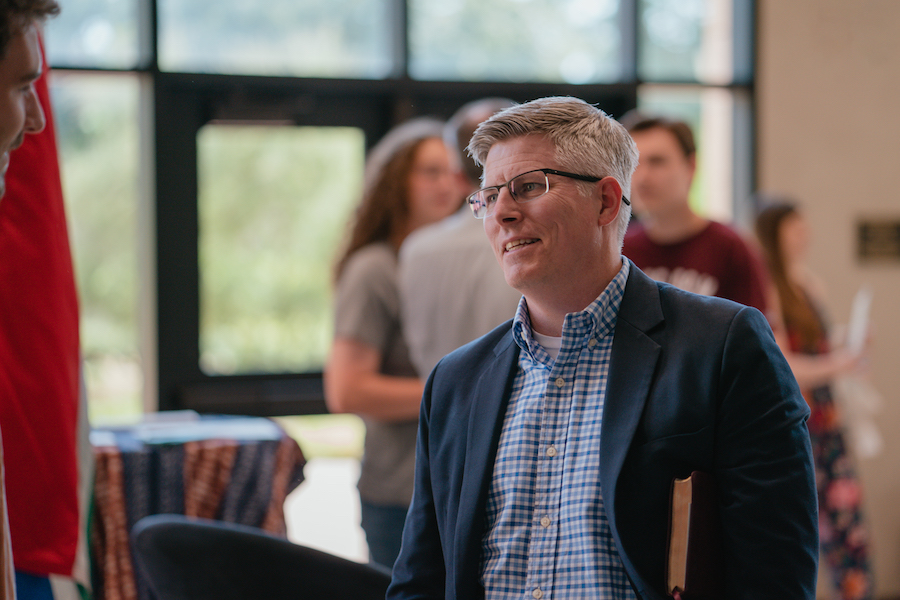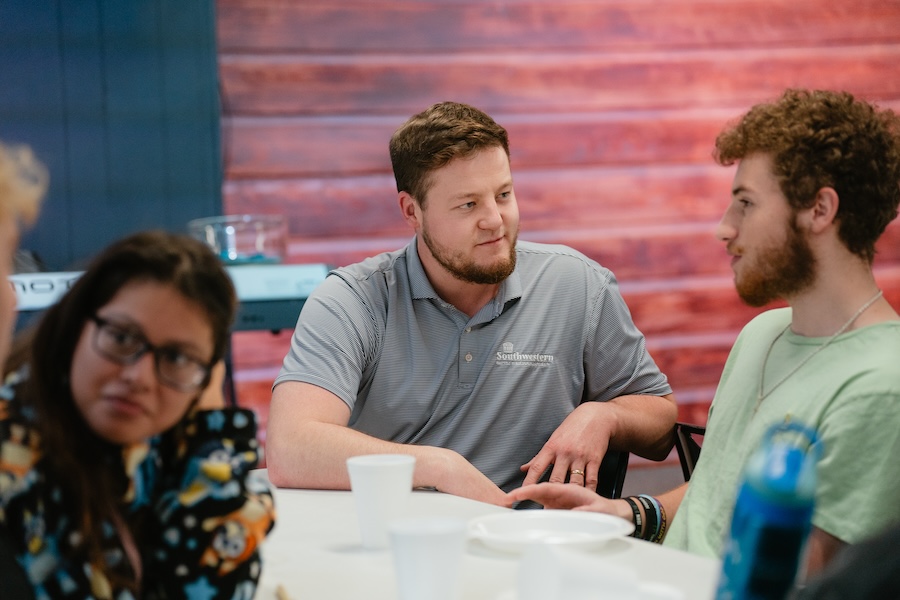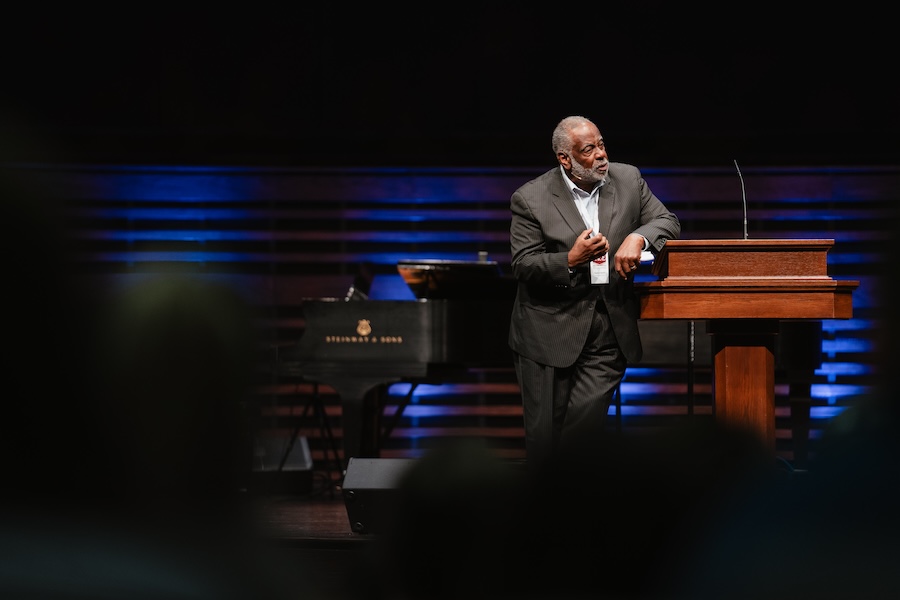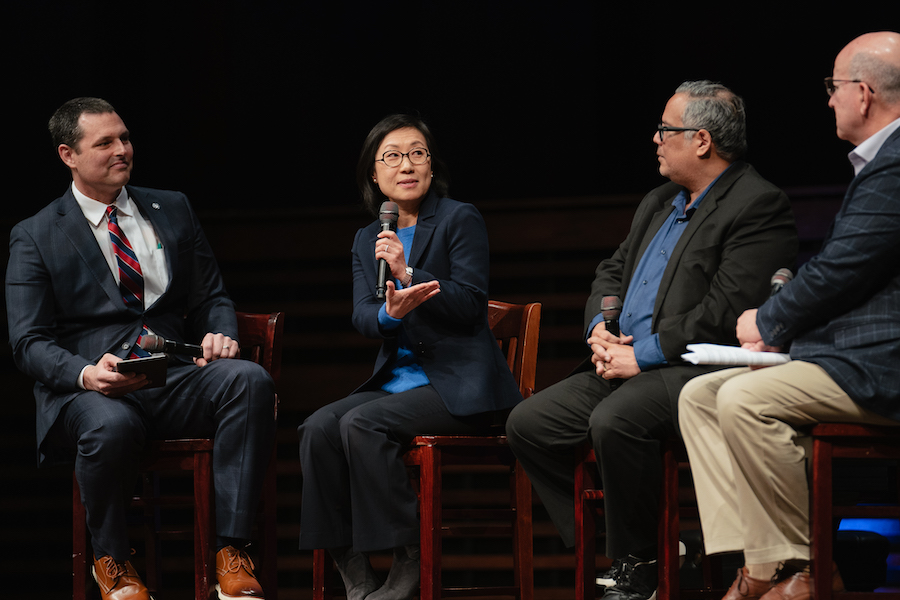Southwestern Seminary ‘virtual choir’ bridges pandemic division
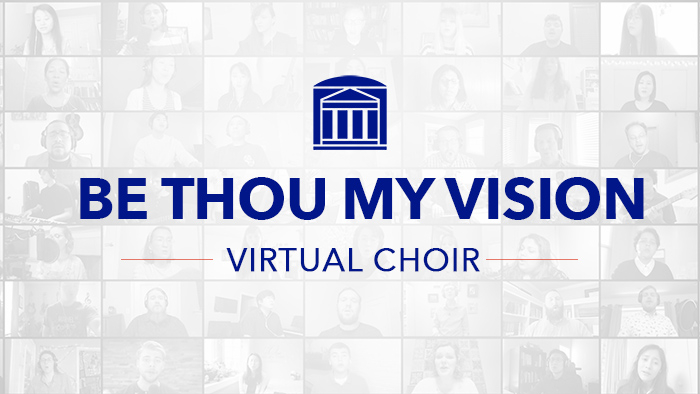

Nearly 70 students and faculty from The Southwestern Baptist Theological Seminary have collaborated as a “virtual choir” to record a legacy hymn, “Be Thou My Vision,” uniting an array of Christian voices and musicians to inspire the body of Christ during this time of separation caused by COVID-19. The video was released online today.
“One of my daughters mentioned how much she missed singing in choir,” says Joseph R. Crider, dean of the School of Church Music and Worship. “At the same time, Dr. Chuck Lewis came up with the idea of asking our School of Church Music and Worship students to sing in a virtual choir. We asked for volunteers, and nearly 60 students and eight of our faculty responded.”
Lewis, professor of church music and worship and associate dean of the music school, says the shelter-in-place order due to the coronavirus “has been especially difficult for music and worship students, who are commonly found rehearsing together, singing together, or playing instruments together for the glory of the Lord. As the halls of the School of Church Music and Worship grew silent, we decided to try a virtual choir video, a new adventure for us all.”
Lewis says the virtual choir video is the collective effort of students and faculty “who are literally scattered all over the world.” Participants recorded their individual parts from their dorm rooms, apartments, and homes, and these parts were compiled into a single, united choir.
On the selection of “Be Thou My Vision,” Lewis explains that the hymn “is first and foremost a prayer. It is asking the Lord to be the center of our minds’ attention and first in our hearts’ affection.”
Upon learning of the effort, Lachuné Boyd, a master’s student from Darlington, South Carolina, was immediately interested. “It’s been a wonderful experience, and the height of this will be when people are listening, sharing, and hopefully singing along from their homes the timeless truth in ‘Be Thou My Vision,’” she says.
“Now, of course, there’s the musician part of me that was super nervous,” Boyd admits. “But Dr. Lewis and Dr. Crider were super encouraging and reminded me that the heart of this is to minister to the body of Christ in the midst of this pandemic. Also, Sterling Sellman, the audio technician, was super patient. They created a recording environment where I could focus not on myself but the text.”
Bachelor’s student Konley Lincecum from Buna, Texas, was happy to participate in a project that reunited members of the music school. “I had never participated in anything like this before, but it was such a blessing,” she says. “It also was a reminder that we are never alone.”
Mathew Hurst, a bachelor’s student from Pearland, Texas, recorded his segment at his church. “As I’m currently serving as a minister on staff, things have been rather crazy balancing online classes and a daily ministry in the midst of COVID-19,” he says. “To able to take part in an outside project and have a change of pace was very refreshing and encouraging. Making music for the Lord is always a joy.”
The most important aspect of producing a virtual music video is synchronization, says Lewis. “All videos must be recorded at the exact same tempo in exactly the same key with not an ounce of deviation.” Students were sent practice tracks along with musical directions, he says, “like when to grow louder or softer, when to breathe, how to add vibrato, and other musical nuances.”
Once the recordings were made, participants uploaded their videos into a shared folder. “Each video was then labeled and shared with our audio engineer and our video editor, who, by the way, are in two different states,” notes Lewis.
“Our ultimate goal, though, was not to produce a music video,” Lewis says. “Our ultimate goal was to seize this moment to use our combined gifts and talents to be a blessing to the church during this very difficult season of life that has kept most churches from meeting together.”
The video can be viewed here.
